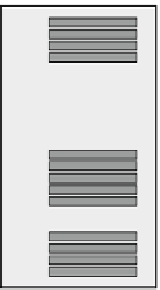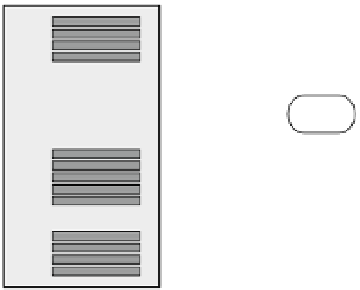Database Reference
In-Depth Information
improvements with high speed, high throughput interconnects (10GigE). For a full table scan, disk access achieves
higher throughput than global cache, because the global cache does not do large I/Os very well and is CPU intensive.
The trade-off is multidimensional: Interconnect latency is traded off for disk access when the disks are not very fast
and therefore inexpensive. This is more true in OTLP systems that predominantly have single random block access.
We look at a two scenarios to better understand the RAC behavior.
Scenario 1: Block Request Involving Two Instances
Figure
13-3
is a four-node RAC cluster. All instances maintain masters for various objects represented by R1 thru R8.
In our discussions, we assume that the data blocks for the object discussed are mastered on instance 4 (
SSKY4
).
1.
The user session requests for a block of data and the GCS process checks the local cache
for the data block; when data is not found, GCS makes a request to the object master. In
Figure
13-3
, the instance
SSKY3
requires a row from a block at data block address file#100,
block# 500 (100/500) and makes a request to the GCS of the resource.
SSKY2
SSKY1
SSKY4
SSKY3
R7
R5
R3
R1
R8
500:9996
1
R4
R2
2
SCN 9996
Block 450
Block 459
Block 550
Block 500
Block 600
Block 490
SSKYDB
Figure 13-3.
Cache Fusion 2-way
GCS on
SSKY4
after checking with the GRD determines that the block is currently in its
local cache. The block is found on instance
SSKY4
, and the GCS sends the block to the
requesting instance
SSKY3
.
2.
This instrumentation required to determine the time taken for each of these steps is available within the Oracle
Database in the
GV$SYSSTAT
or the
GV$SESSTAT
views. RAC-specific statistics are in class 8, 32, and 40 (see Figure
13-4
)
and are grouped under “Other Instance Activity Stats” in an AWR report.




































Search WWH ::

Custom Search